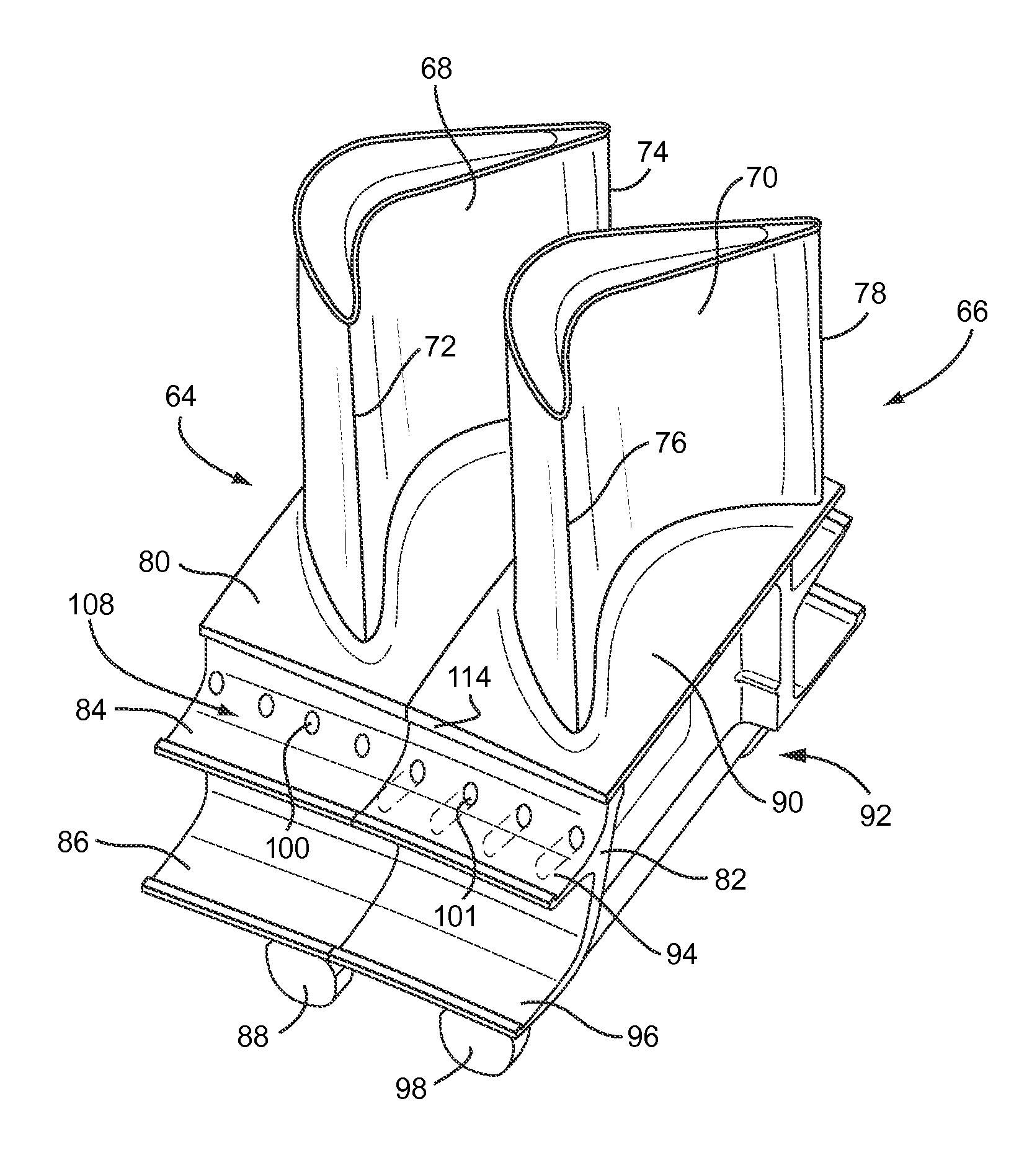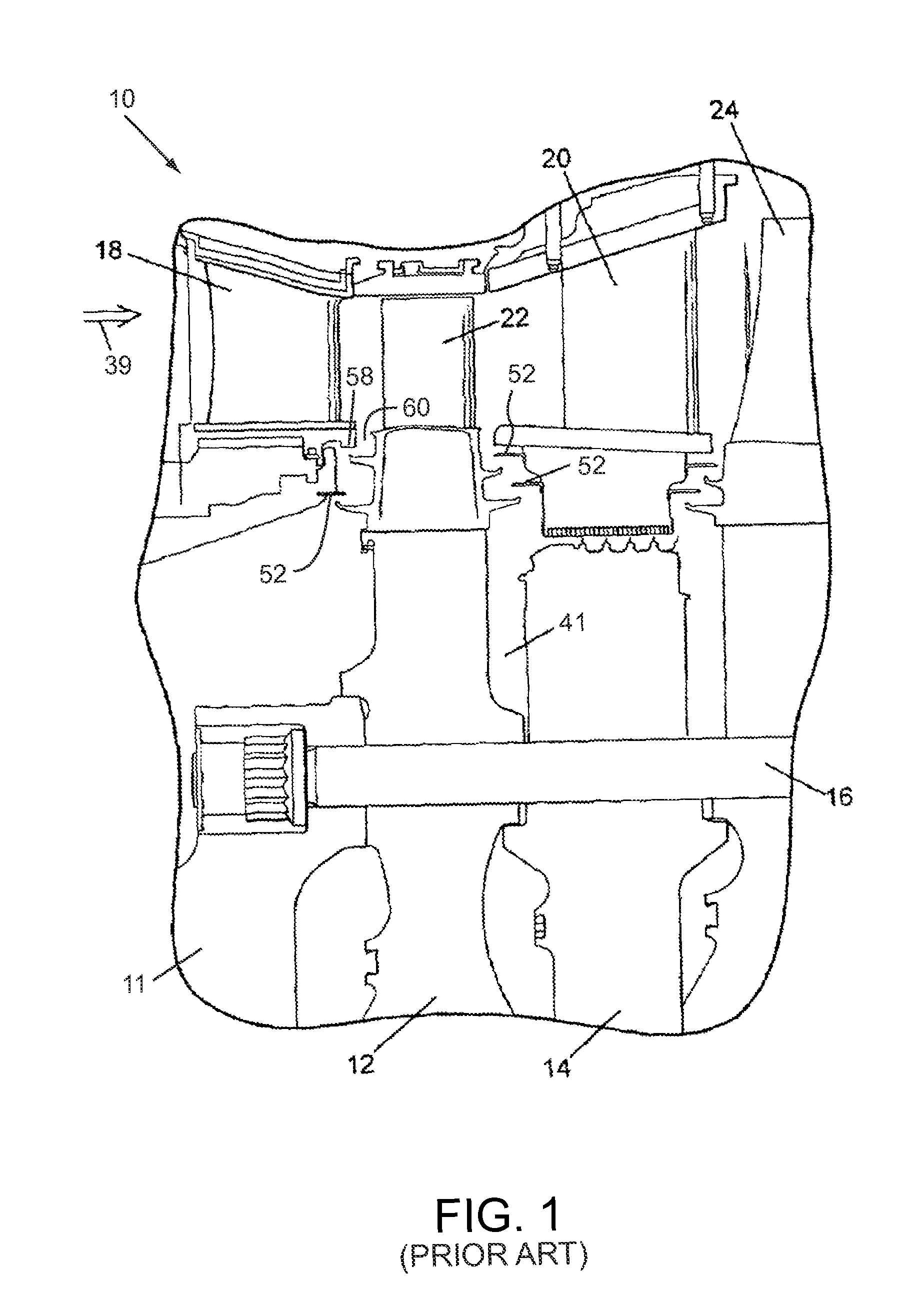Turbine bucket angel wing features for forward cavity flow control and related method
a technology of forward cavity and flow control, applied in the field of rotary machines, can solve the problems of damage to components, loss of efficiency and thus output, and disadvantageous leakage of hot gas into the wheelspace by this pathway
- Summary
- Abstract
- Description
- Claims
- Application Information
AI Technical Summary
Benefits of technology
Problems solved by technology
Method used
Image
Examples
Embodiment Construction
[0020]FIG. 1 schematically illustrates a section of a gas turbine, generally designated 10, including a rotor 11 having axially spaced rotor wheels 12 and spacers 14 joined one to the other by a plurality of circumferentially spaced, axially-extending bolts 16. Turbine 10 includes various stages having nozzles, for example, first-stage nozzles 18 and second-stage nozzles 20 having a plurality of circumferentially-spaced, stationary stator blades. Between the nozzles and rotating with the rotor and rotor wheels 12 are a plurality of rotor blades, e.g., first and second-stage rotor blades or buckets 22 and 24, respectively.
[0021]Referring to FIG. 2, each bucket (for example, bucket 22 of FIG. 1) includes an airfoil 26 having a leading edge 28 and a trailing edge 30, mounted on a shank 32 including a platform 34 and a shank pocket 36 having integral cover plates 38, 40. A dovetail 42 is adapted for connection with generally corresponding dovetail slots formed on the rotor wheel 12 (FIG...
PUM
 Login to View More
Login to View More Abstract
Description
Claims
Application Information
 Login to View More
Login to View More - R&D
- Intellectual Property
- Life Sciences
- Materials
- Tech Scout
- Unparalleled Data Quality
- Higher Quality Content
- 60% Fewer Hallucinations
Browse by: Latest US Patents, China's latest patents, Technical Efficacy Thesaurus, Application Domain, Technology Topic, Popular Technical Reports.
© 2025 PatSnap. All rights reserved.Legal|Privacy policy|Modern Slavery Act Transparency Statement|Sitemap|About US| Contact US: help@patsnap.com



